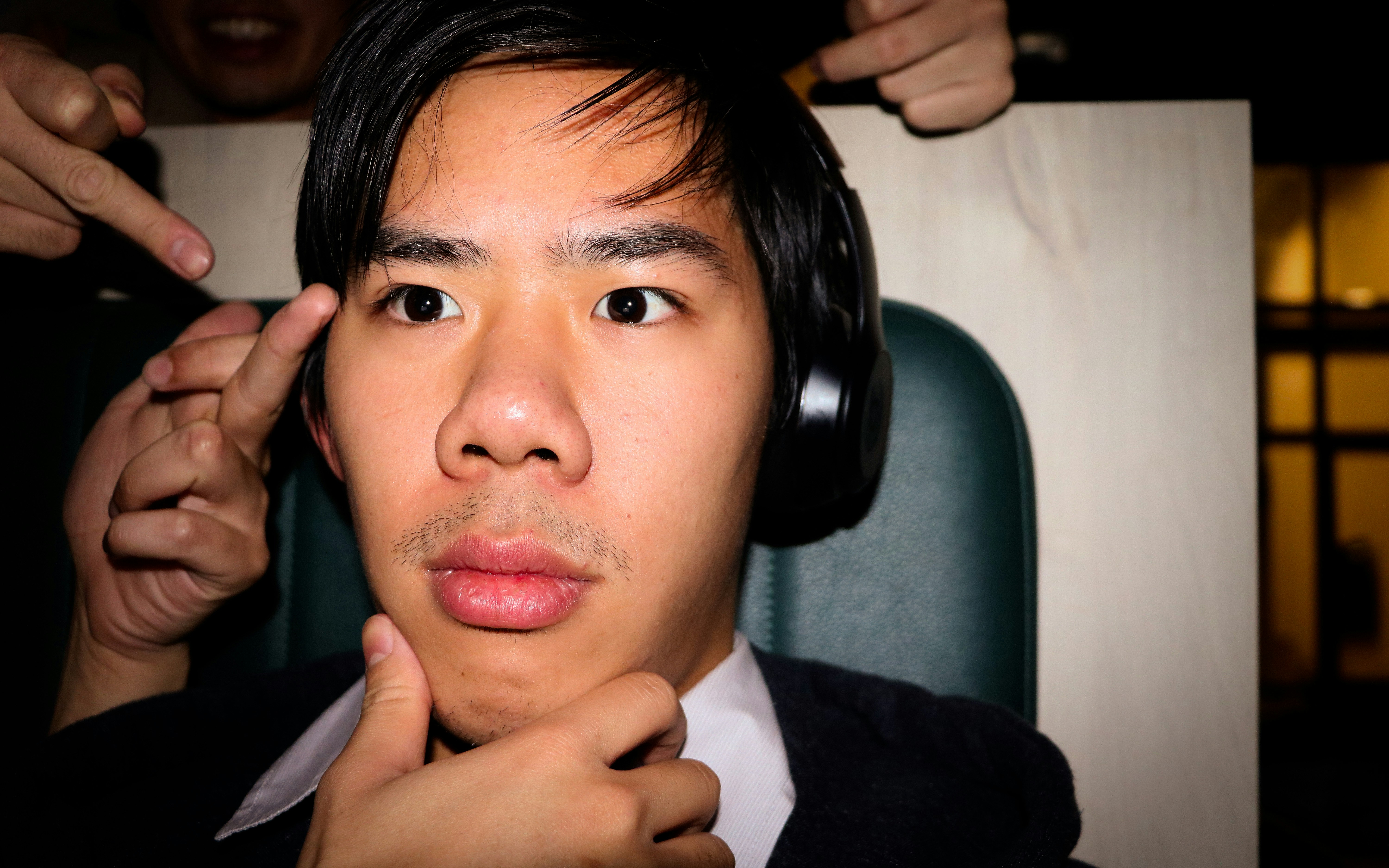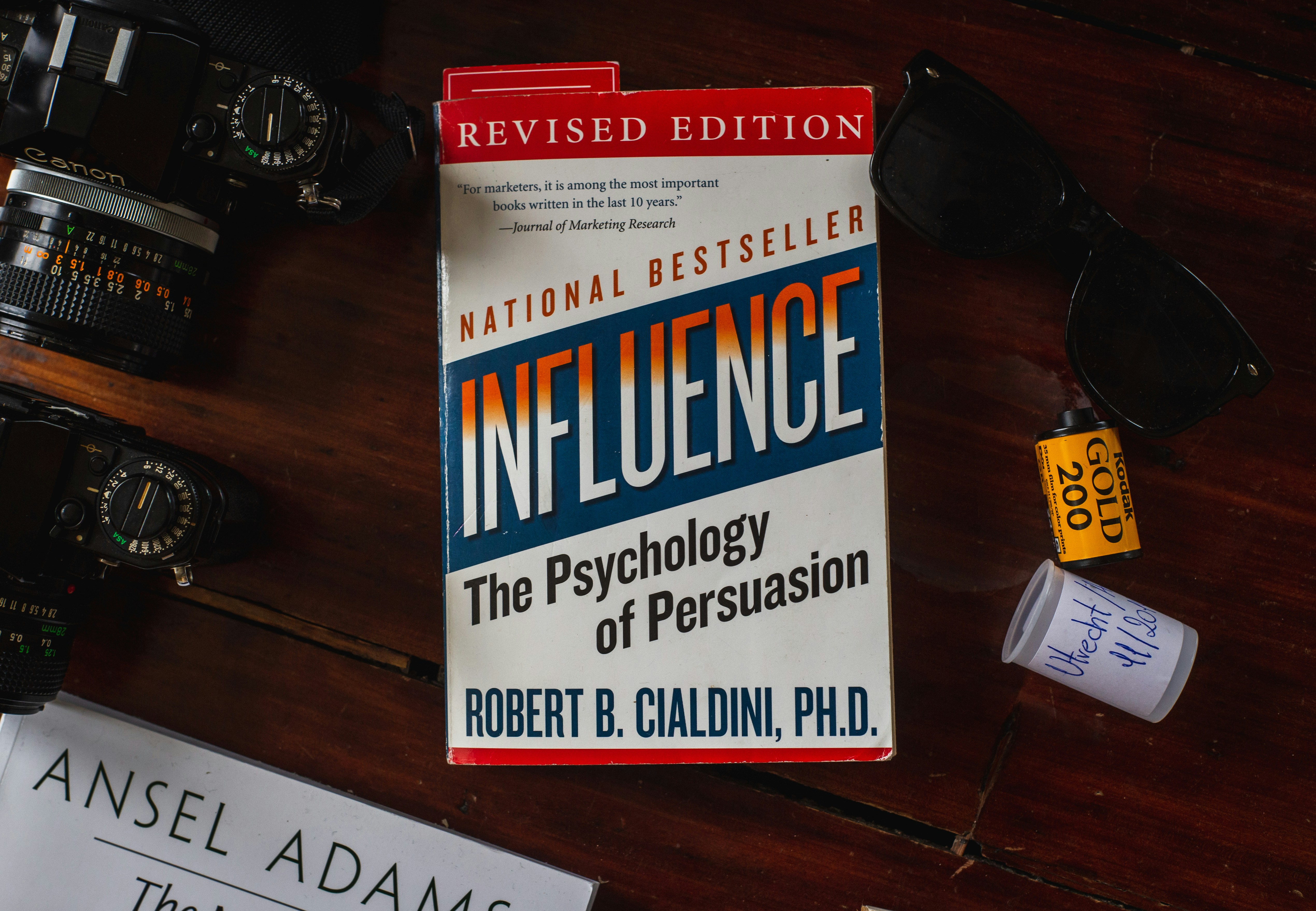
Introduction to the Backfire Effect
The backfire effect is a psychological phenomenon that occurs when individuals are presented with evidence contradicting their long-held beliefs, prompting them to cling to those beliefs even more fervently. Originating from cognitive dissonance theory, the backfire effect suggests that rather than changing one’s opinion in response to factual information, a person may experience increased resistance to that information, thereby reinforcing their original stance. This reaction is particularly prevalent in emotionally charged topics, such as politics, religion, and social issues, where personal identities are intricately tied to one’s beliefs.
Understanding the backfire effect is increasingly pertinent in today’s information-rich environment, characterized by the rapid dissemination of news through social media and other digital platforms. In this landscape, individuals are frequently exposed to a variety of viewpoints, which, coupled with cognitive biases, can amplify the backfire effect. When confronted with facts that challenge their beliefs, individuals often experience discomfort and anxiety. Instead of rationally processing the information, they may resort to defensive mechanisms, reinforcing their initial opinions or even adopting more extreme positions. This challenge complicates efforts in persuasion, education, and public discourse, leading to a polarized society.
The implications of the backfire effect extend beyond individual psychology, affecting group dynamics and societal interactions as well. As misinformation proliferates, the tendency for individuals to reject factual evidence becomes a barrier to constructive dialogue and collective problem-solving. To navigate this complex landscape, it is essential to comprehend the mechanisms that drive the backfire effect, enabling more effective communication strategies that address the underlying beliefs and motivations of individuals. By doing so, we can foster a greater capacity for understanding and potentially bridge the gaps that divide differing perspectives in our communities.
Understanding Cognitive Dissonance
Cognitive dissonance is a psychological theory that describes the discomfort experienced when an individual holds two or more contradictory beliefs, values, or perceptions. This state of tension compels individuals to seek consistency among their beliefs, often leading to a rejection of information that conflicts with their pre-existing views. The phenomenon plays a crucial role in the backfire effect, wherein individuals may dismiss factual content that opposes their established beliefs in favor of maintaining their cognitive harmony.
The experience of cognitive dissonance can manifest in several ways. For instance, when confronted with new evidence that contradicts a deeply held belief, individuals may experience emotional discomfort. This discomfort may arise from various sources, such as a threat to one’s identity, social belonging, or ingrained values. Instead of adjusting their beliefs to accommodate the new information, many find it easier to reinforce their current views, even in the face of contradictory facts. This leads to an increased entrenchment of those beliefs, which further illustrates the paradox of cognitive dissonance.
The human brain is naturally inclined to seek consistency, which can result in selective exposure to information. People often gravitate towards sources that confirm their beliefs while ignoring or dismissing evidence that challenges them. This selective thinking is at the core of the backfire effect, as individuals may react to facts not merely with skepticism but with outright rejection. As a result, cognitive dissonance becomes a significant barrier to rational discourse and the acceptance of factual information.
Understanding cognitive dissonance is essential in exploring why individuals may resist changes in their beliefs, even when faced with overwhelming evidence. This resistance is deeply rooted in psychological processes that prioritize emotional comfort over factual accuracy, ultimately shaping our interactions with information across various contexts.
The Role of Confirmation Bias
Confirmation bias is a cognitive tendency observed in individuals when they seek, interpret, and remember information that confirms their pre-existing beliefs or hypotheses. This bias leads people to favor data that supports their viewpoints while disregarding or minimizing information that contradicts them. In the context of the backfire effect, confirmation bias plays a critical role in how we process information and influence our reactions to opposing arguments. When faced with evidence that challenges one’s established beliefs, instead of considering this information rationally, individuals often exhibit a defensive response, which can reinforce their original stance.
For instance, when individuals are presented with research findings or facts that oppose their political or social opinions, confirmation bias can lead them to dismiss such evidence as flawed or biased. This dismissal occurs because the information does not align with their worldview, prompting a refusal to engage with any contradictory evidence. Consequently, this after-the-fact rationalization facilitates an environment where individuals become more entrenched in their beliefs, thereby experiencing the backfire effect. Essentially, rather than changing their opinions, they may double down on their existing views, which may further isolate them from alternative perspectives.
Research indicates that confirmation bias may manifest in various domains of life, including politics, health, and personal relationships. Social media platforms amplify this phenomenon, creating echo chambers where users are predominantly exposed to like-minded individuals, reinforcing their biases continuously. As individuals interact exclusively with supportive content, their ability to critically evaluate opposing information diminishes. Ultimately, the interplay between confirmation bias and the backfire effect highlights a significant challenge in fostering open dialogue and constructive discourse, as cognitive biases often obstruct the pursuit of objective truth.
Neuroscience Insights: How the Brain Processes Information
The human brain is a complex organ that processes vast amounts of information daily. Understanding how our brains operate during cognition, particularly in the context of belief formation and maintenance, is crucial in deciphering why the backfire effect occurs. Neuroscientific research has consistently highlighted that different brain regions are activated when we encounter information that aligns with our pre-existing beliefs as opposed to information that challenges them.
Studies employing neuroimaging techniques, such as functional magnetic resonance imaging (fMRI), reveal that the amygdala, a region associated with emotional responses, plays a significant role when individuals are confronted with facts that contradict their beliefs. This emotional arousal can trigger a defensive reaction, making it more difficult to accept contradictory information. Additionally, the prefrontal cortex, which is involved in decision-making and rational thought, also shows varying levels of activity depending on whether the incoming information aligns with an individual’s beliefs. When faced with conflicting evidence, this region may become less active, reducing the likelihood of reconsidering or updating one’s beliefs.
Moreover, dopamine, a neurotransmitter linked to reward processing, also influences how we engage with information. When we encounter affirming content, dopamine release can reinforce our existing beliefs, while factual contradictions can feel threatening, leading to discomfort and avoidance. This neurochemical response emphasizes the innate human tendency to cling to familiar ideas, as the brain seeks to maintain a cohesive worldview. Consequently, when evidence contradicts our beliefs, we are likely to repel such information rather than assimilate it, further solidifying our original stance. Therefore, comprehending these neuroscientific insights sheds light on why individuals often reject factual information, ultimately generating resistance to belief change and perpetuating the backfire effect.
Studies by Nyhan and Colleagues
Brendan Nyhan and his team have conducted several significant studies that illustrate the backfire effect, where presenting factual information can inadvertently reinforce incorrect beliefs. One of the pivotal experiments involved participants who held strong misconceptions about vaccines and their purported links to autism. In this study, Nyhan and his colleagues provided participants with accurate information debunking the myths surrounding vaccines. Surprisingly, rather than aligning their views with the facts, many participants ended up holding their original misconceptions with even greater conviction.
Another noteworthy experiment focused on political beliefs. In a controlled setting, subjects were presented with evidence countering their pre-existing political opinions on sensitive issues such as climate change and immigration. The research found that, when confronted with factual contradictions, individuals often increased their support for their original viewpoint, showcasing how deeply ingrained beliefs can obstruct the uptake of new information. This phenomenon highlights a psychological defense mechanism that appears to fortify existing biases, rendering factual corrections less effective.
Nyhan’s 2014 study, published in the journal Science Communication, examined the persistence of the backfire effect in various contexts. It revealed that the backfire effect might not only be limited to emotionally charged issues like vaccinations and politics but could also extend to other domains such as health and science communication. By systematically analyzing the results from different experiments, the research provides robust empirical evidence supporting the existence of this cognitive bias.
Overall, the studies conducted by Nyhan and his colleagues have substantially contributed to the understanding of the backfire effect, illustrating the complexities of human cognition in the face of factual information. These findings challenge the conventional notion that facts alone can effectively change minds, emphasizing the need for strategies that consider the psychological underpinnings of belief systems.
The Implications for Public Discourse
The backfire effect presents significant implications for public discourse, particularly in an age dominated by rapid information exchange and polarized political environments. Understanding this cognitive phenomenon is essential for effectively addressing misinformation and fostering more productive communication strategies. When individuals are confronted with beliefs that oppose their own, rather than reconsidering their stance, they often reinforce their existing beliefs, making debunking misinformation increasingly challenging. This presents a crucial hurdle in public dialogue, wherein the sharing of facts and critical discussion could ideally lead to more informed and rational opinions.
In political debates, the backfire effect can lead to entrenched positions among participants. For instance, as opponents present opposing data, individuals are likely to cling stubbornly to their preconceived notions even in the face of contradictory evidence. This tendency contributes to a toxic environment where constructive discourse is replaced by arguments that lack comprehension or empathy. Such dynamics can polarize communities, making it difficult for citizens to come together on critical issues, as misunderstandings proliferate and vitriol overshadows nuanced discussions.
Moreover, media consumption plays a pivotal role in amplifying the backfire effect. With the rise of social media platforms, individuals are increasingly exposed to echo chambers that align with their beliefs. This selective exposure to information reinforces biases and diminishes the probability of encountering diverse perspectives. To mitigate the backfire effect, it is essential to prioritize communication strategies that facilitate open dialogue and promote cognitive flexibility. Encouraging active listening and framing information in a manner that acknowledges and respects differing viewpoints can yield more productive engagements, ultimately contributing to a healthier public discourse.
Strategies to Overcome the Backfire Effect
Understanding the backfire effect is crucial for effective communication, particularly when engaging with individuals who may hold strong opposing beliefs. Several strategies can be employed to navigate these conversations and encourage openness to new ideas without triggering defensive mechanisms in the brain.
Firstly, it is essential to establish common ground. By identifying shared values or beliefs, communicators can create a sense of collaboration rather than confrontation. This approach helps reduce feelings of defensiveness, fostering an environment where new information can be discussed more openly.
Secondly, using a non-confrontational tone is vital. Communicators should aim to use language that is respectful and encourages dialogue. Phrasing statements as inquiries rather than assertions can be particularly effective. For example, instead of directly challenging someone’s belief, one might ask, “Have you considered how this evidence fits with your viewpoint?” This type of questioning promotes critical thinking while minimizing defensiveness.
Additionally, presenting information gradually can aid in reducing the backfire effect. Instead of overwhelming individuals with a plethora of facts, communicating one key idea at a time allows for cognitive processing without overwhelming the brain. Visual aids, such as infographics or charts, can also be useful tools to highlight data effectively while making the information more digestible.
Lastly, personal stories and anecdotes can enhance relatability and engagement. Sharing personal experiences related to the topic creates emotional connections, making it more likely for individuals to empathize with alternative viewpoints. Stories often resonate on a deeper level than raw facts, which can lead to more receptive attitudes toward new ideas.
By applying these strategies, communicators can effectively mitigate the backfire effect and pave the way for constructive conversations that encourage individuals to embrace new information.
Conclusion: Embracing Cognitive Flexibility
The exploration of the neuroscience underlying the backfire effect reveals significant insights into human cognition, particularly regarding how people respond to information that contradicts their pre-established beliefs. This cognitive phenomenon illustrates a key challenge: when confronted with facts that clash with personal beliefs, individuals are often more likely to hold on to their views rather than reassess them based on new evidence. Understanding this tendency is crucial for promoting informed discussions and enhancing interpersonal communication.
Encouraging cognitive flexibility—as the ability to adapt one’s thinking in response to new information—is essential in navigating conversations that may involve differing perspectives. When individuals are willing to embrace cognitive flexibility, they open themselves up to considering alternative viewpoints without the immediate urge to defend their own opinions. This openness is fundamental for fostering constructive dialogue, as it lays the groundwork for mutual understanding and respect in discussions on contentious issues.
Moreover, embracing cognitive flexibility can lead to improved problem-solving and decision-making, as it encourages individuals to synthesize information from various sources, evaluate their biases, and ultimately arrive at more informed conclusions. The ability to entertain differing viewpoints not only enriches personal understanding but also improves the quality of discussions within communities, organizations, and society at large. In essence, cultivating cognitive flexibility is a vital skill that can bridge gaps between conflicting beliefs, making it essential in an increasingly polarized world.
In conclusion, the backfire effect serves as a reminder of the complexities of human cognition. By fostering cognitive flexibility and promoting openness to differing perspectives, individuals can facilitate constructive dialogue and contribute positively to the collective discourse. Embracing this approach may ultimately lead to a deeper understanding and collaboration that transcends divisive barriers.
Further Reading and Resources
For those interested in delving deeper into the intricacies of the backfire effect, cognitive dissonance, and related psychological phenomena, a plethora of academic articles and literature is available. One seminal work is “Mistakes Were Made (But Not by Me)” by Carol Tavris and Elliot Aronson, which provides an accessible introduction to cognitive dissonance and its implications in various contexts, including personal and political beliefs. The authors explore how individuals rationalize their decisions and the subsequent resistance to factual corrections.
An essential academic resource is the article “The Backfire Effect: Inoculation and Resistance to Persuasion” by Brendan Nyhan and Jason Reifler, which offers empirical studies demonstrating how individuals often reinforce their pre-existing beliefs when confronted with counter-evidence. This article is pivotal for understanding the mechanisms behind belief perseverance and is frequently cited by scholars exploring the backfire effect in contemporary issues like public health and political discourse.
In addition to articles and books, many informative videos and lectures can enhance understanding of these concepts. For instance, the TED Talk by Elizabeth Loftus titled “How Reliable is Your Memory?” touches upon cognitive biases, memory, and their role in shaping belief systems, providing a broader context to the backfire effect.
Online platforms such as ResearchGate and Google Scholar offer access to a wide range of peer-reviewed papers for those who wish to conduct thorough research on this topic. Furthermore, engaging in discussion forums or following relevant psychology blogs can provide ongoing insights and contemporary analyses of how the backfire effect influences various psychological outcomes in society.
### **The Social Media Amplification Effect**
A 2024 study from Stanford University revealed:
– Social media algorithms show users **content they already agree with** within just 2-3 clicks.
– This creates an “echo chamber” where people **rarely see opposing views**.
– Result: The brain becomes **more resistant** to facts over time.
**Solution**:
Platforms like Twitter now use “Read Before Retweet” warnings, which reduced sharing of false claims by 29%.
### **Science-Backed Persuasion Techniques**
1. **The “Prebunking” Method**:
– Show people **weak examples of misinformation** first, then correct them.
– Example: *”Some say vaccines contain chips. Actually, they contain…”*
– Works 53% better than regular corrections (Cambridge University, 2022).
2. **Use Stories, Not Statistics**:
– Say: *”My neighbor didn’t vaccinate, then her child got measles”*
– Stories are **40% more persuasive** than dry facts.
### **Try This Today**
Ask yourself:
1. When was the last time I changed my mind about something important?
2. Did emotions or facts play a bigger role?
3. Can I explain why someone might disagree with me?







